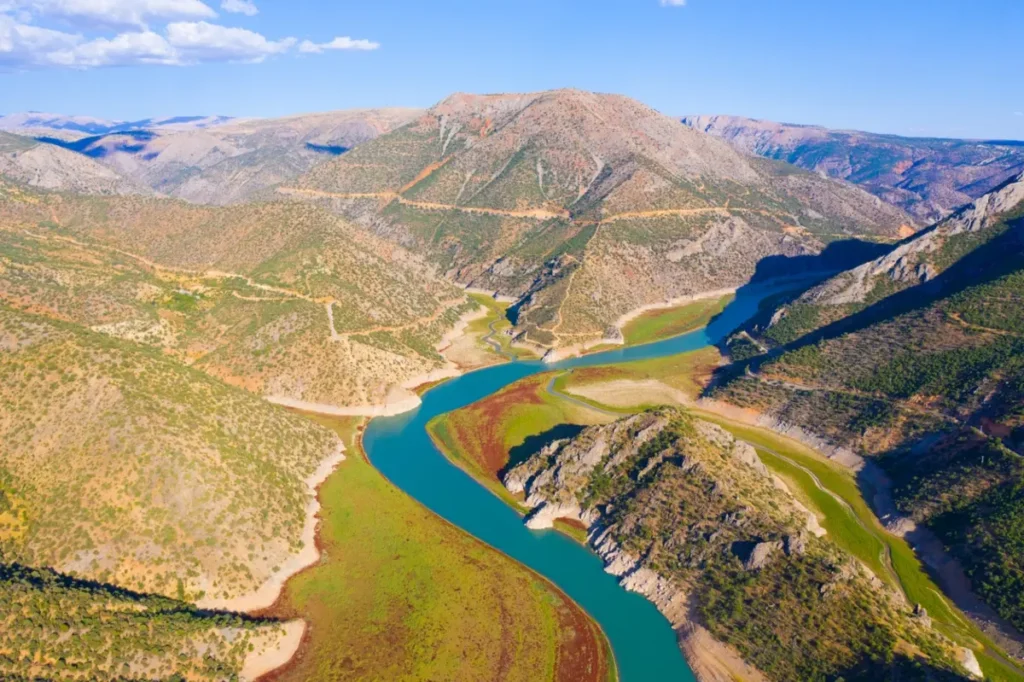
Introduction
Brief Overview of the 7 Wonders
The modern Seven Wonders, as released in 2007 by the New7Wonders Foundation, represent a blend of natural marvels, architectural feats, and cultural richness from various corners of the world. They include the Great Wall of China, Petra in Jordan, Brazil’s Christ the Redeemer, Machu Picchu in Peru, the Chichen Itza Pyramid in Mexico, Italy’s Roman Colosseum, and the Taj Mahal in India. Ranging from ancient ruins to modern marvels, each site showcases human genius and resilience, as well as the splendid diversity exemplified in different civilizations. Step with us into a journey spanning continents and centuries, reveling in the real, outstanding relics of our shared human heritage.
Importance of Recognizing Global Heritage
Preserving and acknowledging universal cultural legacy is paramount, as it illuminates the magnitude of human accomplishment. The updated list of seven marvels doesn’t just distinguish these stunning architectural masterpieces but also amplifies our understanding of how our forebears interacted with their physical and cultural environment, inspiring subsequent generations. These monuments serve as capsules of diverse civilizational narratives and technological advancements. Recognizing them facilitates global unity, encourages exploration, fosters respect for varied cultural histories, and promotes conservation efforts. By appreciating this shared heritage, we don’t just celebrate our past, we also acquire indispensable lessons which can guide our future.
In-depth exploration of the ‘New 7 Wonders of the World’
Great Wall of China
Serpentine majestically through northern China, the Great Wall boasts a history exceeding two millennia. Conceived by Emperor Qin Shi Huang in the third century BC as fortification against invasions, it was later extended by the Ming Dynasty. Estimated at over 13,000 miles, the wall’s scale defies belief. Apart from its military purpose, it also served as a transportation corridor in ancient times. Engineering marvels from watchtowers to smoke signals facilities are sprinkled along, enhancing its strategic worth. Its construction details, tales of courage woven into its bricks and breathtaking views have secured its place as a revered global cultural heritage site.
Petra, Jordan
Petra, often described as the ‘Rose City’ due to its blush-hued sandstone cliffs, is an archaeological wonder nestled south of Jordan. Dating back to 300 B.C., it was once a thriving trading hub and the capital of the Nabatean Empire. The city boasts intricate buildings carved into the mountains, the most famous of which is Al-Khazneh, the so-called ‘Treasury’. Breaktakingly ornate, this monument reflects a blend of Greco-Roman architectural influences. Beyond its historical significance, Petra is also a natural marvel, with its surrounding rock-strewn landscapes, cliffside paths and towering rock formations, underscoring why it’s a wonder worthy of global recognition.
Christ the Redeemer, Brazil
Enthroned atop the scenic Corcovado Mountain overlooking the city of Rio de Janeiro stands the majestic statue of Christ the Redeemer. Unveiled in 1931, this awe-inspiring monument is an emblem of Christianity and a symbol of Brazilian warmth. Standing tall at 98 feet, with a wingspan of 92 feet, the statue astounds with its sheer scale and design. Made of reinforced concrete clad in a mosaic of triangular soapstone tiles, the art deco piece was designed by Carlos Oswald and sculpted by Paul Landowski. Amid whispering winds and breathtaking views, this colossal figure welcomes and blesses locals and tourists alike, ensuring its place as one of the renowned wonders of the world.
Machu Picchu, Peru
Nestled in the rugged Andes Mountains of Peru, Machu Picchu stands as a vivid reminder of the Inca civilization’s grandeur. This 15th-century relic, meaning ‘Old Peak’ in Quechua, dazzles with its intricate stonework, precise astronomical alignments, and panoramic views of the surrounding mountain range. Its exact purpose remains a mystery, fueling intrigue and intrigue among historians and visitors alike. The deep-green terraces, contrasting with the stone-walled ruins, offer splendid views that never cease to amaze, justifying its place as a UNESCO World Heritage site and one of the New 7 Wonders of the World. Exploring Machu Picchu provides a mesmerizing walk through our shared human history.
Chichen Itza, Mexico
Nestled in the heart of Mexico’s Yucatan peninsula lies the famed Mayan city of Chichen Itza, a testament to ancient engineering marvels. With Kukulkan Pyramid as its centrepiece, often referred to as ‘El Castillo,’ it displays a complex astronomical calendar marked by shadows during the equinox. The city is also home to the largest Mayan ballcourt, where games with severe outcomes were conducted. Its temples exhibit intricate carvings, echoing stories of the powerful Mayan civilization. Chichen Itza, exemplary of the Mayan’s profound understanding of astronomical sciences and architectural mastery, truly deserves its spot among the ‘New 7 Wonders of the World’.
Roman Colosseum, Italy
Nestled in the heart of Rome, the Colosseum is an embodiment of both grandeur and history. It was instituted around 80 AD and could accommodate about 50,000 spectators. This majestic amphitheater, primarily used for gladiatorial contests and public spectacles, is quintessential of ancient Roman engineering and architecture. Incredibly, despite natural calamities and centuries of stone robbers, two-thirds of the original structure remains intact. Witnessing the Colosseum, you can almost hear the echoes of a crowd, cheering as the gladiator games ensue. Its enduring presence makes it more than just a monument; it’s a captivating chronicle of Rome’s deeply entrenched history.
Taj Mahal, India
The Taj Mahal, an iconic symbol of love, carved in the white marble of Agra, India, stands as a tribute to the eternal bond of Emperor Shah Jahan and his wife Mumtaz Mahal. Completed in 1653, this monument blends elements of Persian, Ottoman Turkish and Indian architectural styles, and is intricately designed with meticulous precision. Synced symmetrical garden layout, central dome surrounded by four smaller domed chambers, and the main gate opening out to the sight of the majestic Taj, all contribute to the Majestic aura and grandeur. No wonder it attracts millions annually, leaving an everlasting impression of timeless beauty.
Pyramid of Giza, Egypt (Honorary candidate)
The Pyramid of Giza, an awe-inspiring remnant of ancient Egyptian civilization, stands as a spectator of time, demonstrating remarkable architectural prowess. Uniquely associated with the Great Sphinx, lending an air of enigma and historical wonderment, it is the only one among the seven wonders of the ancient world still standing. Its impressive stature, the result of meticulously stacked limestone blocks, reaching a height of 481 feet, has fascinated historians, archaeologists, and tourists alike through the ages. Although not formally included in the ‘New 7 Wonders,’ the undeniable significance, age, and improbability of its construction have granted it an honorary status.
How the New 7 Wonders were chosen
The New7Wonders foundation and its criteria
Established in 2001, the New7Wonders Foundation sought to revitalize interest in global heritage by selecting a new set of seven wonders. The noteworthy endeavor was led by Swiss businessman Bernard Weber, whose vision incorporated public input in the decision-making process. People worldwide were encouraged to vote from a list of 200 monuments, with the results declared in July 2007. The selection criteria emphasized architectural splendor, geographical diversity, and cultural significance. They prioritized structures created before 2000 A.D., which were largely intact, and represented humanity’s shared legacy. The initiative thus successfully engaged millions in a conversation about our shared heritage.
The Global Voting Campaign
In 2001, a mammoth initiative was set in motion by the New7Wonders Foundation. They sought to establish a modern counterpart to the historical wonders, inciting a global voting campaign where the entire world could participate. The initiative was driven online, looking to leverage the burgeoning power of the internet which was capable of reaching out to a broad, international audience. The result was a decade-long campaign during which over 100 million votes were cast, democratically deciding on the new lineup. This engaging process marked an historic global consensus on what should stand as the modern world’s foremost monuments.
Impact of being a Wonder
Influence on Tourism
Earning a spot amongst the 7 New Wonders greatly elevates a location’s global prestige, leading to a surge in international visitors looking to experience their grandeur first-hand. For instance, additional income from increased tourists aids in local community development and supports conservation efforts, thus securing the monument’s future. However, it isn’t without downsides. The increased footfall may necessitate stringent crowd management strategies to protect the integrity of the wonders. It’s a delicate balance of nurturing and capitalizing on the wonder’s newfound fame while ensuring its longevity. Thus, being a wonder has pros and cons for tourism.
Cultural Significance
Designated as Wonders, these remarkable sites carry profound cultural implications that permeate societies around the globe. This recognition often paired with increased tourism, enables an influx of varied perspectives, promoting cross-cultural understanding and appreciation. It also bolsters local economies and aids in the preservation and maintenance of the sites. More so, it illuminates the timeless aspirations and ingeniousness of human civilizations, showcasing their technological and architectural feats. These monuments, hence, serve as a vital link between our past and present, offering invaluable insights into various aspects of our shared human history and cultural diversity. Being a Wonder, undeniably, elevates the cultural discourse on a global stage.
Conclusion
Recap of the Wonders and their Importance
As we reflect upon the significance of these marvels, the eclectic mix of ancient history, diverse cultures and pioneering architecture stands out. Each wonder, from the Great Wall of China’s vast fortification to the stunning aesthetic of the Taj Mahal, reflects the triumph of human ingenuity. The Christ de Redeemer goes beyond just religious importance while Chichen Itza, Machu Picchu, and Petra showcase the richness of ancient civilizations. Finally, the Colosseum represents not just Roman grandeur but also the human fascination with entertainment. Their irreplaceable value lies not merely in their visual splendor, but in what they represent -the boundless capabilities of mankind.



